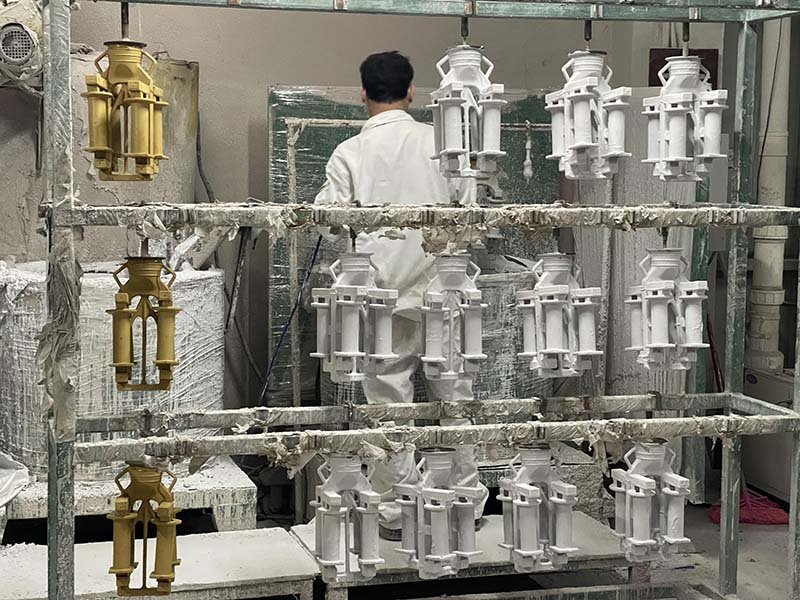best stainless steel investment casting

Stainless steel investment casting is a highly precise and versatile manufacturing process that has become increasingly popular in various industries due to its numerous benefits. As an industry professional, it is essential to understand the intricacies of this process, its applications, and how it compares to other casting methods. This article will delve into the best stainless steel investment casting practices, focusing on key factors such as material selection, process optimization, and post-processing techniques.
1. Material Selection
The choice of stainless steel material is crucial for achieving the desired quality and performance in investment casting. The following are some of the most commonly used stainless steel grades:
a. AISI 316L: This is an austenitic stainless steel known for its excellent corrosion resistance and high strength. It is suitable for applications in marine environments and food processing industries.
b. AISI 317L: Similar to 316L, this stainless steel grade is also used in marine and food processing industries. However, it has a higher carbon content, which makes it more resistant to chloride stress corrosion cracking.
c. AISI 347H: This stainless steel is a precipitation-hardening grade that offers excellent strength and creep resistance. It is commonly used in high-temperature applications, such as turbine blades and heat exchangers.
d. AISI 440C: This martensitic stainless steel is known for its excellent wear resistance and high hardness. It is suitable for applications requiring good cutting tools, such as dies and punches.
1. Process Optimization
The investment casting process involves several steps, including pattern making, shell preparation, wax injection, dewaxing, investment removal, melting, and pouring. To achieve the best stainless steel investment casting results, the following factors must be optimized:
a. Pattern Design: The pattern design should be optimized to minimize the casting defects and ensure the desired surface finish. This includes considering factors such as draft angles, ribbing, and undercuts.
b. Shell Preparation: The quality of the shell directly affects the casting accuracy and surface finish. Proper shell preparation, including shell thickness and porosity control, is essential.
c. Wax Injection: The wax injection process should be optimized to ensure the complete filling of the shell and minimize the air entrainment. Factors such as injection pressure, temperature, and velocity should be carefully controlled.
d. Dewaxing: Dewaxing is a critical step that must be performed at the right temperature and time to avoid any casting defects. Over-dewaxing can lead to the loss of shell strength, while under-dewaxing can result in gas pores.
e. Melting and Pouring: The melting and pouring process should be optimized to ensure the uniformity of the casting, minimize shrinkage, and avoid any hot tearing or other casting defects. Factors such as melting temperature, pouring temperature, and casting speed should be carefully controlled.
1. Post-Processing Techniques
After the casting process, several post-processing techniques are employed to achieve the desired quality and performance. Some of the common post-processing techniques include:
a. Heat Treatment: Heat treatment, such as solution annealing and aging, is performed to improve the mechanical properties of the stainless steel investment castings.
b. Machining: Machining is used to achieve the final dimensions and surface finish of the castings. The choice of cutting tools and cutting parameters is critical for achieving the desired results.
c. Surface Treatment: Surface treatments, such as passivation and electropolishing, are performed to improve the corrosion resistance and aesthetics of the castings.
1. Comparison with Other Casting Methods
Stainless steel investment casting offers several advantages over other casting methods, such as sand casting, die casting, and permanent mold casting. Some of the key advantages include:
a. High Precision: Investment casting can produce castings with very high accuracy and surface finish, which is difficult to achieve with other casting methods.
b. Complex Shapes: Investment casting is well-suited for producing complex shapes, including intricate features and undercuts, which are challenging to produce using other casting methods.
c. Material Versatility: Investment casting can be used with various stainless steel grades, offering a wide range of material properties and applications.
d. Reduced Scrap: Investment casting typically results in lower scrap rates compared to other casting methods, as it is easier to achieve high-quality castings.
1. Common Questions and Answers
Q1: What is the difference between stainless steel investment casting and sand casting?
A1: Stainless steel investment casting offers higher precision and surface finish compared to sand casting. It is also suitable for producing complex shapes, while sand casting is better suited for simpler shapes.
Q2: What are the advantages of using stainless steel investment casting in high-temperature applications?
A2: Stainless steel investment casting provides excellent heat resistance and creep resistance, making it ideal for high-temperature applications, such as turbine blades and heat exchangers.
Q3: Can stainless steel investment casting be used for large-sized castings?
A3: Yes, stainless steel investment casting can be used for large-sized castings, but it may require special considerations such as pattern design and shell preparation to ensure the quality and accuracy of the casting.
Q4: How can the surface finish of stainless steel investment castings be improved?
A4: The surface finish of stainless steel investment castings can be improved by optimizing the pattern design, shell preparation, and wax injection process. Post-processing techniques such as electropolishing and polishing can also be used to achieve a smooth and aesthetically pleasing surface.
Q5: What are the key factors that affect the cost of stainless steel investment casting?
A5: The cost of stainless steel investment casting is influenced by several factors, including the material grade, complexity of the casting, size of the casting, and the required surface finish. Proper planning and optimization of the process can help reduce the overall cost.
